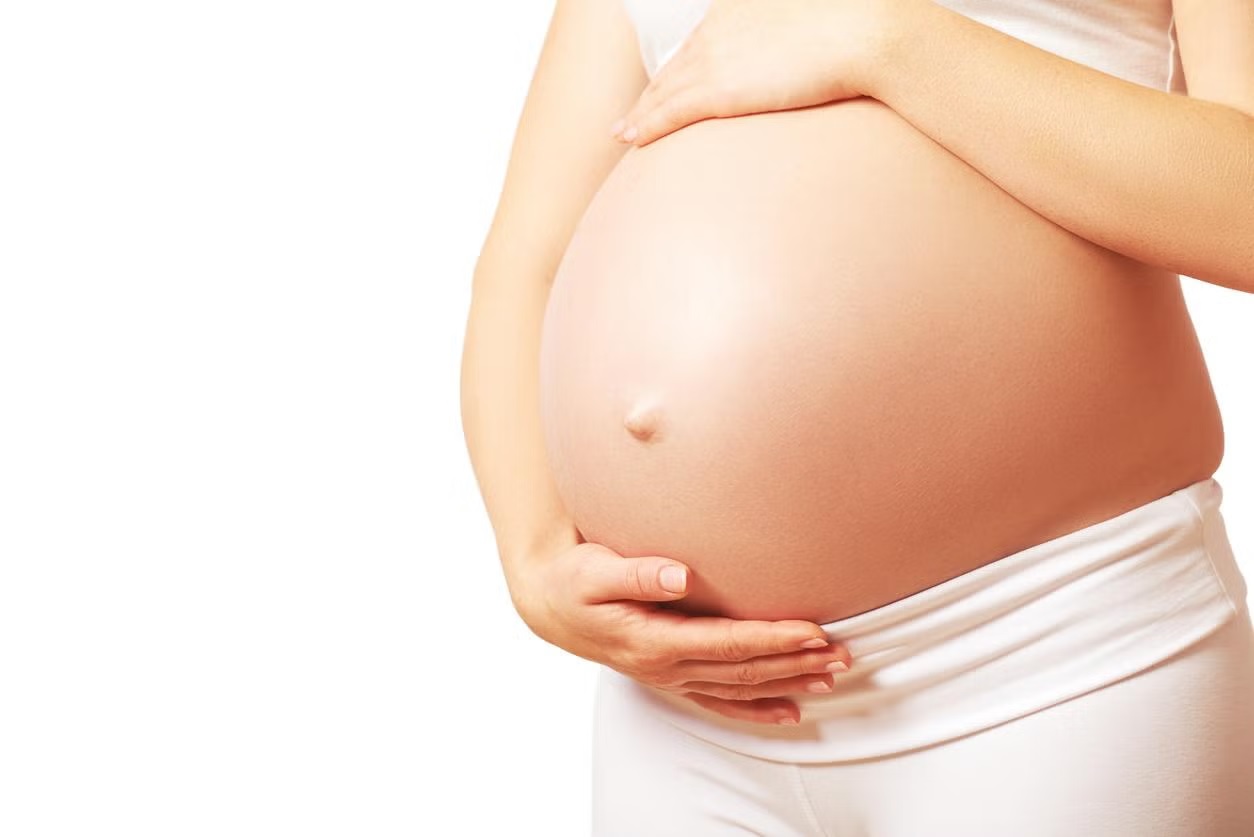
Welcoming a new life into the world is a miraculous and awe-inspiring experience. The journey of a baby in the womb is a remarkable process that is filled with wonder and complexity. From the moment of conception to the day of birth, the development of a baby in the womb is a fascinating and intricate journey that never fails to captivate our imagination. In this article, we will explore 18 intriguing facts about the incredible world of the developing baby in the womb. From the astonishing speed of growth to the extraordinary abilities of these tiny humans, each fact sheds light on the astonishing journey of prenatal development. Let’s delve into the extraordinary world of the baby in the womb and uncover some truly fascinating insights.
Key Takeaways:
- Babies in the womb can taste, hear, and even dream! They can recognize their mother’s voice, respond to music, and develop preferences for flavors. This early sensory learning shapes their experiences after birth.
- Babies in the womb communicate with their mothers through movements and can recognize familiar sounds and scents. They can even suck their thumbs and yawn before they are born! This early bonding and sensory development are crucial for their growth.
Baby in the womb can taste what the mother eats.
During the second trimester, the taste buds of the baby start to develop. This means that the baby can taste the different flavors of the food that the mother eats. Research suggests that the amniotic fluid surrounding the baby takes on the flavors of the mother’s diet, influencing the baby’s preferences before birth.
Babies in the womb can hear and recognize voices.
By the third trimester, the baby’s auditory system is well developed, and they can hear sounds from the outside world. They are able to recognize their mother’s voice and may even respond to familiar music or sounds. This early exposure to sounds can have a significant impact on the baby’s auditory development after birth.
Baby’s sex is determined at conception.
Contrary to popular belief, the sex of the baby is determined at the moment of conception. The mother’s egg carries an X chromosome, while the father’s sperm carries either an X or a Y chromosome. If the sperm carrying an X chromosome fertilizes the egg, the baby will be female (XX), and if the sperm carrying a Y chromosome fertilizes the egg, the baby will be male (XY).
Babies can hiccup in the womb.
Hiccups are a common occurrence for babies in the womb, and mothers may feel the rhythmic movements as early as the first trimester. These movements are a normal part of the baby’s development and are believed to help in the maturation of the baby’s diaphragm muscles.
Babies in the womb start to dream at around 28 weeks.
Studies have shown that rapid eye movement (REM) sleep, which is associated with dreaming, begins at around 28 weeks of gestation. This suggests that babies in the womb may experience dreams, although the content of these dreams is not fully understood.
Baby’s first poop is called meconium.
Meconium is the first stool that a baby passes after birth. It is greenish-black in color and is made up of materials that the baby ingested while in the womb, such as amniotic fluid, mucus, and skin cells. The passing of meconium is an important indicator of the baby’s digestive system functioning properly.
Babies can respond to light in the womb.
By the third trimester, the baby’s eyes are developed enough to detect changes in light. They may respond to a light source by moving or even turning their heads. This sensitivity to light is an important part of the baby’s visual development before birth.
Babies in the womb can recognize their mother’s scent.
Research suggests that the amniotic fluid carries the scent of the mother, allowing the baby to become familiar with her unique smell. This early olfactory learning may contribute to the bond between mother and baby after birth.
Babies can suck their thumbs in the womb.
Ultrasound images have captured many instances of babies sucking their thumbs in the womb. This self-soothing behavior can start as early as 15 weeks of gestation and is a natural reflex that provides comfort to the baby.
Babies in the womb can experience hiccups.
Hiccups are a normal part of a baby’s development in the womb and are typically felt by the mother in the later stages of pregnancy. These movements are a sign that the baby’s respiratory system is maturing and preparing for life outside the womb.
Babies in the womb can respond to music.
Research suggests that babies in the womb can respond to music by moving or increasing their heart rate. Exposing the baby to music during pregnancy may have a calming effect and can even influence the baby’s musical preferences after birth.
Babies in the womb can distinguish between different languages.
Studies have shown that babies in the womb can distinguish between different languages based on rhythmic and intonational patterns. This early exposure to language may play a role in the baby’s language development after birth.
Babies in the womb have a sense of touch.
The development of the baby’s sense of touch begins early in gestation, and by the second trimester, they can respond to gentle touches on the mother’s abdomen. This early sensitivity to touch is an important aspect of the baby’s sensory development.
Babies in the womb can yawn.
Ultrasound images have captured babies in the womb yawning, indicating that this behavior begins before birth. Yawning is believed to play a role in the development of the baby’s respiratory system and brain function.
Babies in the womb can recognize familiar tastes.
Research suggests that babies in the womb can develop a preference for flavors that they are repeatedly exposed to through the mother’s diet. This early familiarity with tastes may influence the baby’s food preferences after birth.
Babies in the womb can learn to recognize and respond to their mother’s touch.
Mothers often report feeling their baby respond to their touch in the womb, indicating that the baby can recognize and respond to the sensation of being touched. This early bonding through touch is an important aspect of the mother-baby relationship.
Babies in the womb can communicate with their mothers through movements.
Babies often communicate with their mothers through movements such as kicks, rolls, and jabs. These movements are a way for the baby to convey their needs and responses to stimuli, creating a unique form of communication between mother and baby before birth.
Babies in the womb can recognize and respond to familiar sounds and voices.
Research suggests that babies in the womb can recognize and respond to familiar sounds, including their mother’s voice, music, and other environmental noises. This early auditory learning may have a lasting impact on the baby’s sensory development after birth.
Conclusion
Learning about the development of a baby in the womb is not only fascinating but also crucial for understanding the miracle of life. From the moment of conception to birth, the journey of a baby in the womb is filled with incredible milestones and developments. These 18 interesting facts shed light on the awe-inspiring process of fetal growth and provide a deeper appreciation for the complexities of human life. As we continue to unravel the mysteries of prenatal development, we gain a greater understanding of the delicate and intricate nature of life itself.
FAQs
Q: What are some common milestones in a baby’s development in the womb?
A: Common milestones include the formation of major organs by week 12, the ability to hear sounds by week 18, and the development of reflexes and brain activity by week 24.
Q: How does a baby receive nourishment in the womb?
A: A baby receives nourishment through the placenta, which delivers oxygen and nutrients from the mother’s bloodstream.
Q: What are some factors that can affect a baby’s development in the womb?
A: Factors such as the mother’s health, diet, and lifestyle choices, as well as genetic factors, can all impact a baby’s development in the womb.
Q: At what point in the pregnancy can a baby’s gender be determined?
A: In most cases, a baby’s gender can be determined through ultrasound around the 20th week of pregnancy.
Q: How does the environment in the womb impact a baby’s future health?
A: The environment in the womb, including factors like the mother’s stress levels and exposure to toxins, can potentially influence a baby’s future health and development.
Was this page helpful?
Our commitment to delivering trustworthy and engaging content is at the heart of what we do. Each fact on our site is contributed by real users like you, bringing a wealth of diverse insights and information. To ensure the highest standards of accuracy and reliability, our dedicated editors meticulously review each submission. This process guarantees that the facts we share are not only fascinating but also credible. Trust in our commitment to quality and authenticity as you explore and learn with us.


